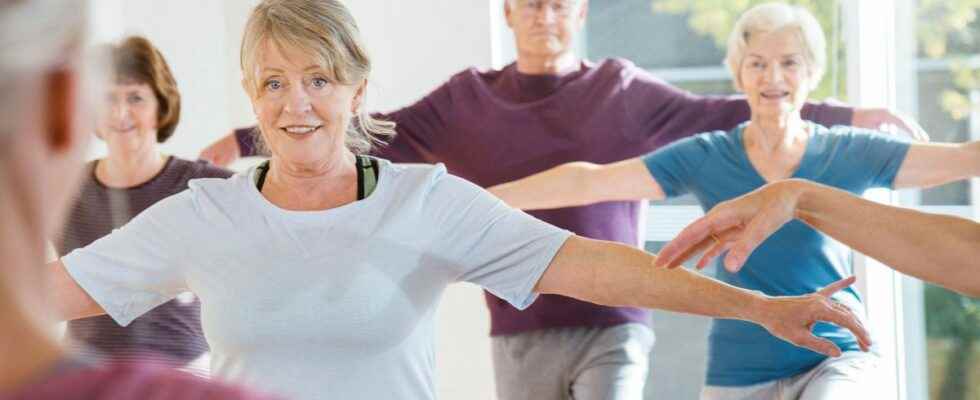Published ,
Reading 2 mins.
in collaboration with
Dr Christophe de Jaeger (Longevity and geriatrics)
Being able to balance on one leg will ensure you live a long time. An international study assures it, the first to officially bring to light the link between balance and mortality in humans.
If you can balance on one foot for no more than 10 seconds, it is best to make an appointment with your doctor to assess your general health.
This invitation comes from a long-term study conducted by a group of international experts (United Kingdom, United States, Australia, Finland and Brazil) on the relationship between balance and mortality. After twelve years of research, his conclusions have just been published in the British Journal of Sports Medicine. According to these, an inability to balance for more than 10 seconds on one leg, from midlife, would indicate a risk of mortality within ten years multiplied by two.
Loss of balance in a senior, a sign of weakening
A total of 1,702 people aged 51 to 75, and with stable gait, were followed between 2008 and 2020. Asked to stand on one leg without any other support, 1 in 5 people failed the test. And 123 people died of various causes over the next decade. The study indicates that “after controlling for age, sex and underlying conditions, an inability to stand unsupported on one leg for ten seconds was associated with an 84% increased risk of death within 10 years regardless of be the cause.”
“In a middle-aged or older subject, the rapid loss of balance, in ten to twenty seconds, reflects a general weakening of the neurological or rheumatological system, indicators to be taken into account”, explains Dr. Christophe de Jaeger, geriatrician and French researcher specializing in aging.
A test known for 30 years
Confident in their study, the researchers recommend including this test from now on in the routine health examinations of middle-aged to advanced patients. For Dr. Christophe de Jaeger, if the study has the merit of putting important data in black and white, it only confirms a practice already in force for thirty years in medical practices in France.
“In terms of health, it is a well-known test that quickly tells us if a person is in a precarious situation, does he develop. But we must add all the same that it can improve. By training patients, by correcting their anomalies, we improve the various systems responsible for standing and, ultimately, their longevity.
